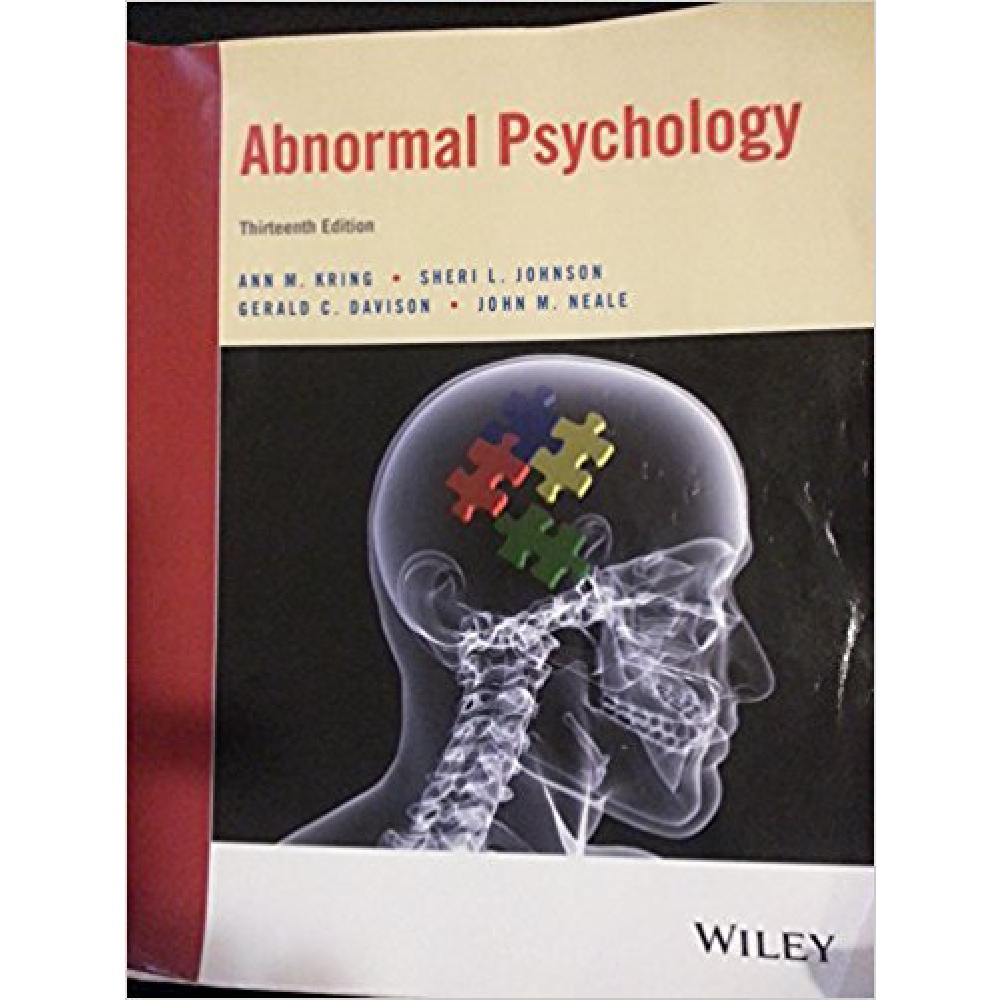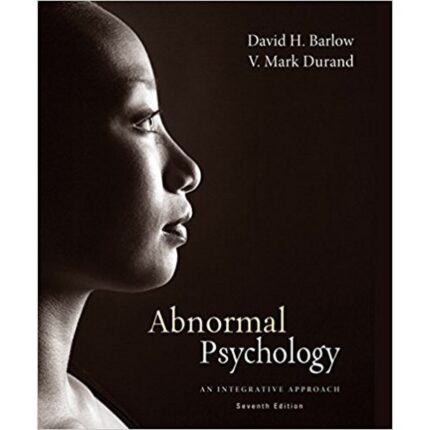Abnormal Psychology The Science And Treatment Of Psychological Disorders,13th Edition By Kring – Test Bank
Chapter 11: Eating Disorders
Multiple Choice
1. In the opening case study, Lynne, the 24-year-old who weighted only 78 pounds, was admitted to the psychiatric ward of general hospital for the treatment of:
a) anorexia nervosa.
b) bulimia nervosa.
c) depression.
d) anxiety.
Ans: a
Type: Applied
Section ref: Introduction
Difficulty: Easy
Learning Objective: Distinguish the symptoms associated with anorexia, bulimia, and binge eating disorder and be able to distinguish among the different eating disorders.
Bloomcode: Application
2. Many cultures, including the United States, are preoccupied with food. Evidence of this fact includes all of the following EXCEPT:
a) number of restaurants available
b) food magazines
c) cooking shows on television
d) number of diet books on the market
Ans: d
Type: Factual
Section ref: Introduction
Difficulty: Easy
Learning Objective: Discuss the issues surrounding the growing epidemic of obesity in the United States.
Bloomcode: Knowledge
3. Starting with the DSM-IV, eating disorders were listed as
a) disorders beginning in childhood or adolescence
b) somatization disorders
c) psychological factors affecting medical condition
d) a separate diagnostic category
Ans: d
Type: Factual
Section ref: Introduction
Difficulty: Easy
Learning Objective: Distinguish the symptoms associated with anorexia, bulimia, and binge eating disorder and be able to distinguish among the different eating disorders.
Bloomcode: Knowledge
4. The DSM-5 categorizes eating disorders in the ___________ chapter:
a) Feeding and Eating Disorders
b) Substance Use Disorders
c) Anxiety Disorders
d) Obsessive Compulsive and Trauma Related Disorders
Ans: a
Type: Factual
Section ref: Introduction
Difficulty: Easy
Learning Objective: Distinguish the symptoms associated with anorexia, bulimia, and binge eating disorder and be able to distinguish among the different eating disorders.
Bloomcode: Knowledge
5. Feeding and Eating Disorders also include which of the following disorders?
a) Pica
b) Rumination Disorders
c) Anxiety Disorders
d) Both a and b
Ans: d
Type: Factual
Section ref: Introduction
Difficulty: Easy
Learning Objective: Distinguish the symptoms associated with anorexia, bulimia, and binge eating disorder and be able to distinguish among the different eating disorders.
Bloomcode: Knowledge
6. Eating disorders carry a stigma. In a recent research study, participants read vignettes about a woman with an eating disorder or a woman with depression. Compared to the woman with depression, the woman with an eating disorder was viewed as:
a) more responsible for her condition
b) less fragile
c) less likely to be trying to get attention with her disorder
d) none of the above
Ans: a
Type: Factual
Section ref: Introduction
Difficulty: Easy
Learning Objective: Distinguish the symptoms associated with anorexia, bulimia, and binge eating disorder and be able to distinguish among the different eating disorders.
Bloomcode: Knowledge
7. In the DSM-IV-TR, ____________ was viewed as a condition requiring further study, but in the DSM-5 it has its own diagnostic category.
a) binge eating disorder
b) obsessive eating disorder
c) pica
d) rumination disorder
Ans: a
Type: Factual
Section ref: Clinical Descriptions of Eating Disorders
Difficulty: Easy
Learning Objective: Distinguish the symptoms associated with anorexia, bulimia, and binge eating disorder and be able to distinguish among the different eating disorders.
Bloomcode: Knowledge
8. Most people with anorexia nervosa
a) lose their appetite
b) lose their interest in food
c) lose both their appetite and interest in food
d) do not lose their appetite or interest in food
Ans: d
Type: Factual
Section ref: Clinical Descriptions of Eating Disorders
Difficulty: Easy
Learning Objective: Distinguish the symptoms associated with anorexia, bulimia, and binge eating disorder and be able to distinguish among the different eating disorders.
Bloomcode: Knowledge
9. __________ refers to a loss of appetite, while __________ indicates that it is due to emotional reasons.
a) bulimia, anorexia
b) anorexia, nervosa
c) nervosa, anorexia
d) anorexia, bulimia
Ans: b
Type: Factual
Section ref: Anorexia Nervosa
Difficulty: Easy
Learning Objective: Distinguish the symptoms associated with anorexia, bulimia, and binge eating disorder and be able to distinguish among the different eating disorders.
Bloomcode: Knowledge
10. People with anorexia nervosa
a) stop eating because of an abnormal increase in blood sugar, which alters their perceptions of hunger.
b) fear gaining weight so much that they stop eating.
c) have lost their appetite, leading them to stop eating.
d) stop eating but do not lose weight.
Ans: b
Type: Factual
Section ref: Anorexia Nervosa
Difficulty: Easy
Learning Objective: Distinguish the symptoms associated with anorexia, bulimia, and binge eating disorder and be able to distinguish among the different eating disorders.
Bloomcode: Knowledge













Reviews
There are no reviews yet.